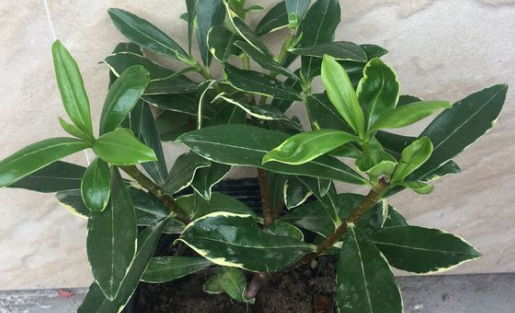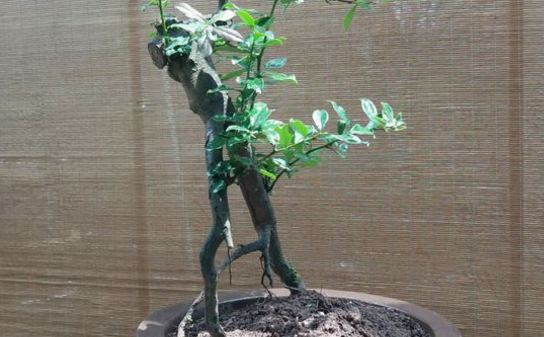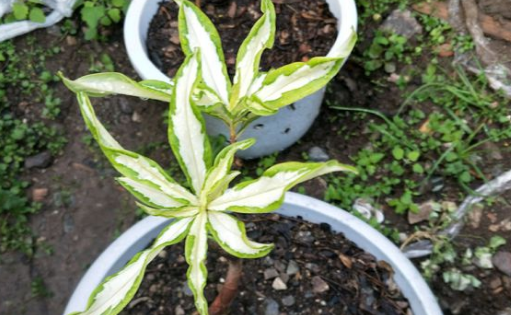The breeding methods and matters needing attention of myrtle? When do you change the basin? How do you trim it?
Ruixiang (scientific name: Daphneodora) is also known as sleeping incense, Penglai purple, amorous tree, Mao Ruixiang, Qianli incense, etc., so the breeding methods and matters needing attention of Ruixiang? When do you change the basin? How do you trim it? According to information, Ruixiang prefers a semi-overcast and more ventilated environment, is afraid of strong light exposure, likes wetting, is not very resistant to drought, but should also be careful not to be too wet. The soil generally chooses loose and fertile soil with good drainage. When applying fertilizer, it is mainly nitrogen, phosphorus and potassium, and base fertilizer can be used.

First, the breeding methods and matters needing attention of Ruixiang?
1. Soil
For the basin soil of Ruixiang, it is best to use fertile, acidic rotten leaf soil with high humus content. Alkaline soil must not be used. It can be mixed as basin soil according to the ratio of mountain soil (garden soil) to rotten leaf soil (pine needle soil) at 5:2.
2. Watering
The root of Daphne is fleshy, so we should pay attention to less watering, not too much water. Once too much watering, the basin soil for a long time in a wet state, easy to cause rotten roots. The stagnant water in the basin should be poured out in time after the rain. After Frosts Descent, the water content of the basin soil should be controlled at about 45%.
3. Fertilization
First of all, basic fertilizer should be fully applied in winter. About 2: 3 thin cake fertilizer and water should be applied in spring, and pay attention to the rotten ones. Stop fertilizing in summer so as not to burn the roots. Apply thin fertilizer frequently in autumn until it blossoms. After forming a bud, the branches and leaves can be sprayed with potassium dihydrogen phosphate. Generally speaking, it likes fertilizer, and it is best to irrigate liquid fertilizer every 10 days during the growth period, and pay attention to the low concentration of liquid fertilizer. In addition, be careful not to use human feces and urine as its fertilizer.
4. Lighting
Ruixiang likes a semi-overcast environment and can't be exposed to the hot sun. But the temperature is low in winter and spring, so it should be placed in an environment where there is light. It should be placed in a well-ventilated shade in summer, and water can be sprayed properly when it is too hot.
Matters needing attention
1. Pruning
This kind of plant is more resistant to pruning and can cut off denser branches before germination to facilitate ventilation and light transmission. Pruning it after flowering can maintain a beautiful flower shape. You can cut short the branches where the residual flowers are located, cutting off overgrown branches, cross branches, overdense branches, overlapping branches and other branches that affect the appearance of the tree.
2. Change the basin
The change of pots is generally carried out after the flower fades, usually every 2-3 years. When changing the basin, you can remove about 2% of the old soil, or you can replace all the old soil with new soil. When changing the basin, you can cut off some overlong roots and lift the roots properly.
When will the basin be changed?
1. Choice of time
Generally speaking, in order to ensure the normal growth of the plant, we will change the flower soil every two years. There is no need to change soil frequently, and of course it can not be changed for too long. The appropriate time to change the basin is in the early spring, that is, from February to March. Because at this time the bud has not yet begun to sprout, it is more suitable.
2. Specific steps
(1) choose basin and soil: observe the size of the plant. If you think the original basin is too small, you can change it to a larger and more suitable one. As for the flower soil, according to the preference of this plant, choose the slightly acidic and loose soil, and take it to the sun before changing the basin, which can kill the harmful bacteria in the soil ahead of time.
(2) change the basin: remove the plant, shake off the soil outside the roots, and cut off the aging and rotten roots. Leave it in a cool, ventilated place for three days and wait for the wound to dry. After that, the new soil is changed into the basin and the plant is placed in the same depth as the original one. After that, the basin soil is compacted and watered, paying attention to watering it as thoroughly as possible.
(3) late management: after watering, the plants should be placed in a ventilated, shaded and cool position, and after about 15 days, normal maintenance and management can be carried out.
Third, how to trim it?
The choice of time
The main results are as follows: (1) first of all, when the growth rate of the plant is very fast, the treatment of "topping" is carried out to promote it to branch as soon as possible.
(2) it can also be pruned after flowering. This plant does not blossom only once a year. Its first flowering probably begins at the end of January and ends at the end of February, when it can be repaired. The second flowering begins at the end of February and ends in early April. It can be pruned again. Generally speaking, pruning after flowering is the most common, so we describe its steps in detail.
Concrete method
(1) in order to prune well, you can put the plant on the turntable and turn it to cut, so that the cut effect is the best.
(2) cut the flowering branches as short as possible, which can promote their branches, so that there will be more blossoms next time.
(3) in addition, we have to cut off the thinner branches, the sick branches and the aging branches, and leave the new and strong branches.
(4) in addition, in order to ensure the appreciation of the overall shape of the plant, we can cut off its overlapping and crossed branches. in addition, the leaves that are out of shape and hinder the ornamental should also be cut off to make the plant more beautiful.
Time: 2019-03-16 Click:
- Prev

The breeding methods and matters needing attention of bottle orchid golden marbles? Can I eat it? When will it blossom and bear fruit?
The nicknames of golden marbles are bottle orchids, black towers and thorn persimmons, so the breeding methods and precautions of golden marbles? Can I eat it? When will it blossom and bear fruit? According to the data, the golden marble likes sunshine. It likes to grow in a warmer environment, but it can withstand low temperatures.
- Next

What is the hydroponic method of the original perianth subclass Phnom Penh Daphne? Is it poisonous? How to raise it in winter?
Phnom Penh Daphne (Latin name: Daphneodora) is a variety of Daphne odora, so what is the hydroponic method of Phnom Penh Daphne? Is it poisonous? How to raise it in winter? It is understood that before hydroponics, Phnom Penh Daphne should first choose utensils that can put branches. It is better to have more space and enough oxygen, which is conducive to rooting.
Related
- Fuxing push coffee new agricultural production and marketing class: lack of small-scale processing plants
- Jujube rice field leisure farm deep ploughing Yilan for five years to create a space for organic food and play
- Nongyu Farm-A trial of organic papaya for brave women with advanced technology
- Four points for attention in the prevention and control of diseases and insect pests of edible fungi
- How to add nutrient solution to Edible Fungi
- Is there any good way to control edible fungus mites?
- Open Inoculation Technology of Edible Fungi
- Is there any clever way to use fertilizer for edible fungus in winter?
- What agents are used to kill the pathogens of edible fungi in the mushroom shed?
- Rapid drying of Edible Fungi

